The Effect of New Pigments in the Industrial Revolution for the Modern Art Movement
Mineral and Mod Pigments: Painters' Access to Color
Gamblin's Color Nautical chart is Organized by 'Mineral' and 'Mod'
This visual sectionalization of mineral and modern colors is unique in the art textile industry, and information technology gives painters an insight into the makeup of pigments from which these colors are derived, also every bit some practical information to help painters create their own personal color palettes.
The Mineral side of the color chart includes those colors made from inorganic pigments from earth and metals. These include globe colors such as Burnt Sienna and Yellowish Ochre, as well as those metal-based colors such as Cadmium Yellows and Reds and Cobalt Bluish, Dark-green, and Violet. The Mod side of the color chart is comprised of colors made from mod "organic" pigments, which have a molecular construction based on carbon. These include the "tongue-twisting" color names like Quinacridone, Phthalocyanine, and Dioxazine.
These two groups of colors have unique mixing characteristics, so this organization helps painters cull an appropriate palette for their creative intentions.
Click hither to download Gamblin'south Artist's Grade Color Chart.
Paint History
Every bit nosotros look back throughout the history of art, paintings have always been a reflection of the materials that were available to artists.This organization of the Gamblin chart tin can be cleaved down a fleck further past giving it some historical perspective based on the three main eras of pigment history
- Classical
- Impressionist
- Modern
The Classical Palette: From Nighttime to Light
At the lesser of the Mineral side of the color nautical chart is the group of earth colors that make upwardly the heart of painters palettes during the Classical era of pigment history. This group of pigments, which has its origins in cavern painting and antiquity, was cardinal to the oil painter'south palette from the Renaissance through the Classical Era of oil painting upward until the beginning half of the Nineteenth Century.
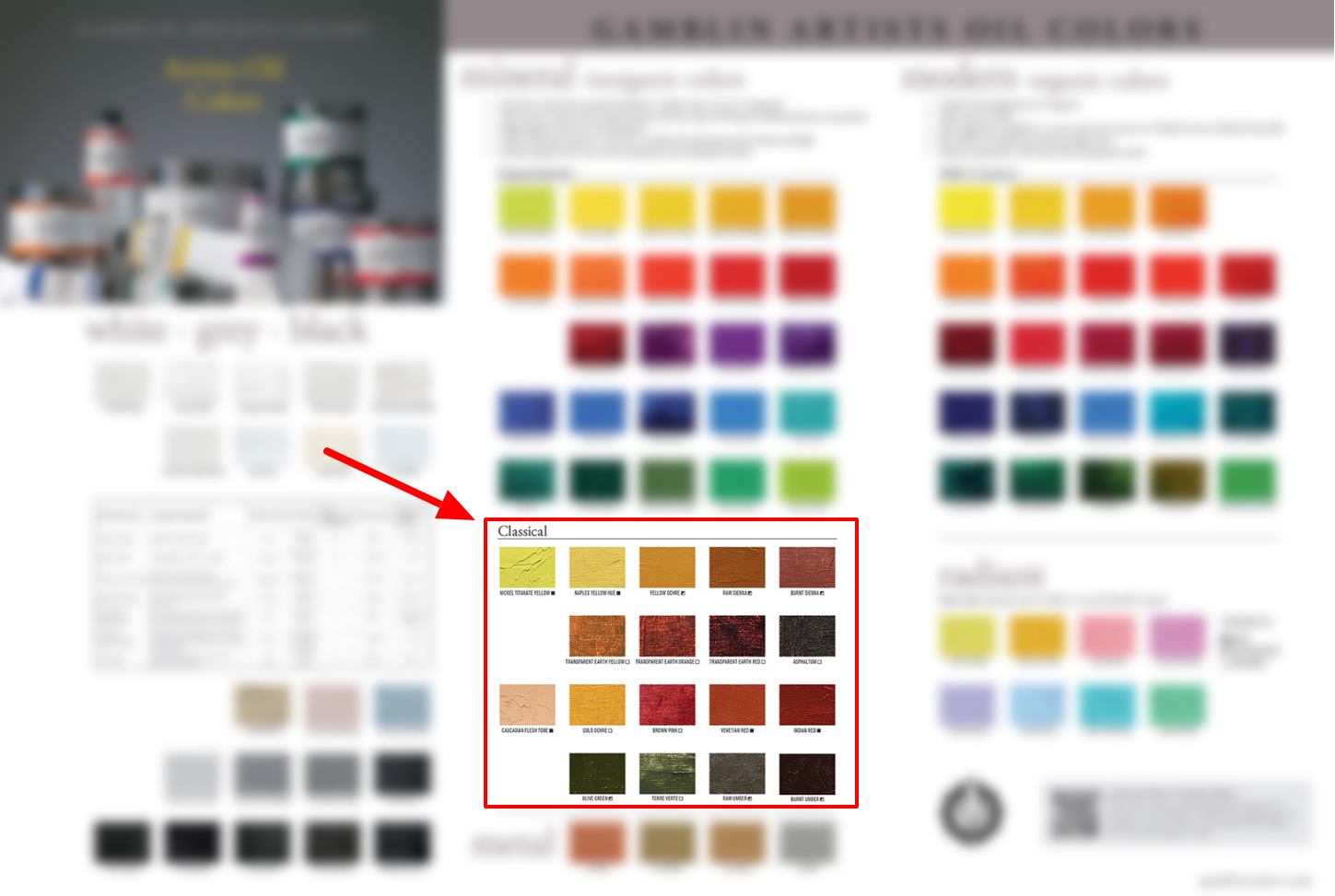
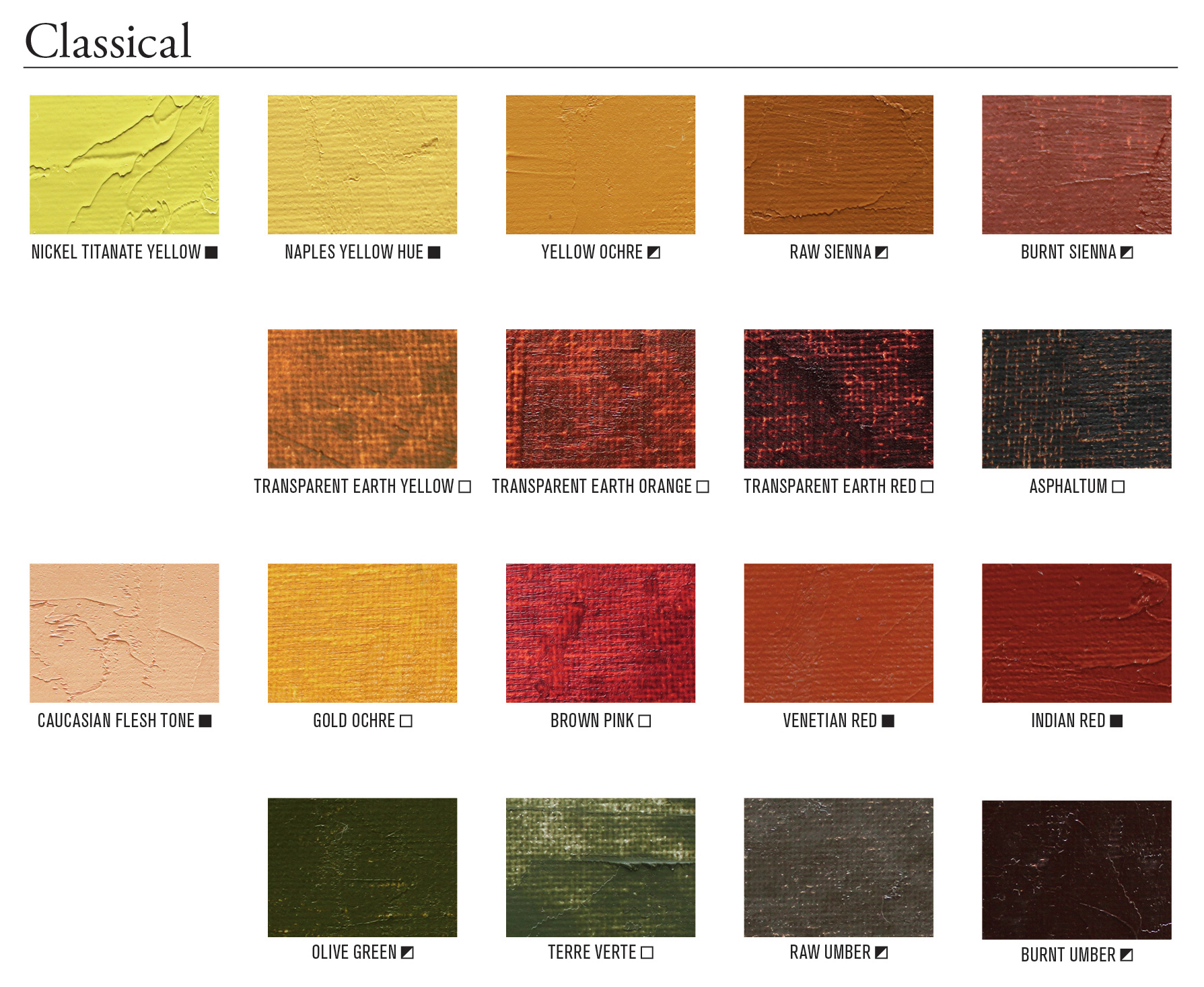
Classical Palette Colors:
- Naples Yellow
- Yellow Ochre, Raw Umber, Vermillion
- Raw Umber
- Vermillion (Napthol Red shown here)
- Venetian Red
- Burnt Sienna
- Indian Cherry
- Ultramarine Blue (lapis)
- Terre Verte
Classical Palette in Color Infinite:

This limited range of muted earth colors exists close to the "neutral core" of Color Space.
Express to this range of the color spectrum, painters depicted form by drawing large contrasts between the darkest darks and the lightest lights, creating the chiaroscuro (literally, "calorie-free/dark") effect and so characteristic of classical paintings.
The Impressionist Palette: A Perfect Storm and a Sea of Modify in Color
The advancements of the Industrial Revolution of the mid-nineteenth century widened the spectrum of both color and possibilities for artists. From nineteenth-century onward, pigments were no longer fabricated specifically for artists' use but for larger industrial coatings and printing industries. A new range of pigments were made by fusing inorganic materials, such as cadmium, cobalt, and chromium, together at very high estrus. Non but did these colors brighten the urban centers of the Atomic number 26 Age, but they widened painters' admission to color compared to the palettes of the Classical Era. Other inventions of the nineteenth century such as the 3-roll mill and the collapsible metal paint tube gave painters the liberty to leave the confines of their studios and pigment direct from nature. At the same time, photography was threatening painting'due south role of reporting the visual world, and painters were revolting confronting the tonal traditionalists of the Parisian art academies. These factors culminated into a "perfect storm," and the result is the oeuvre from the Impressionist movement.
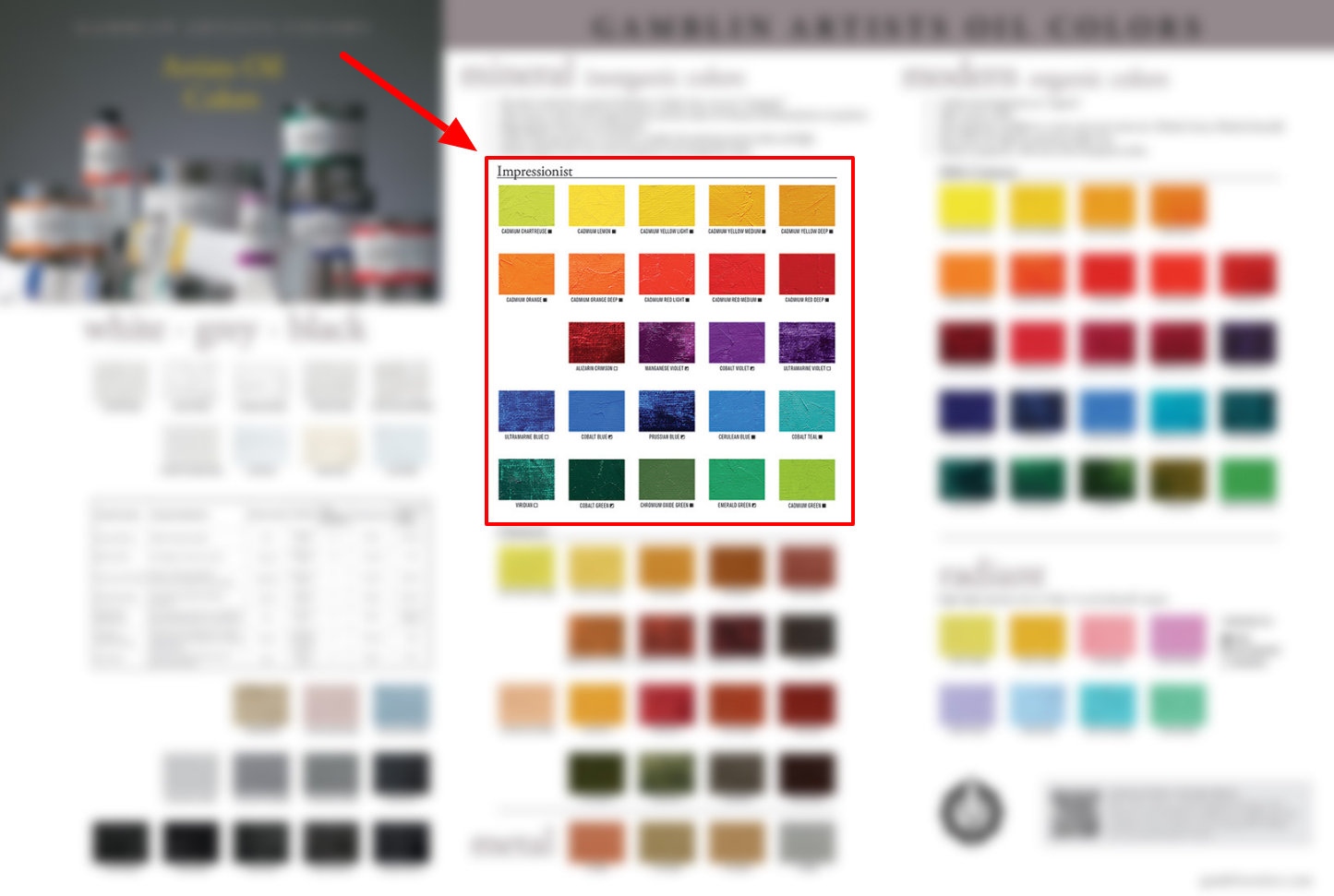
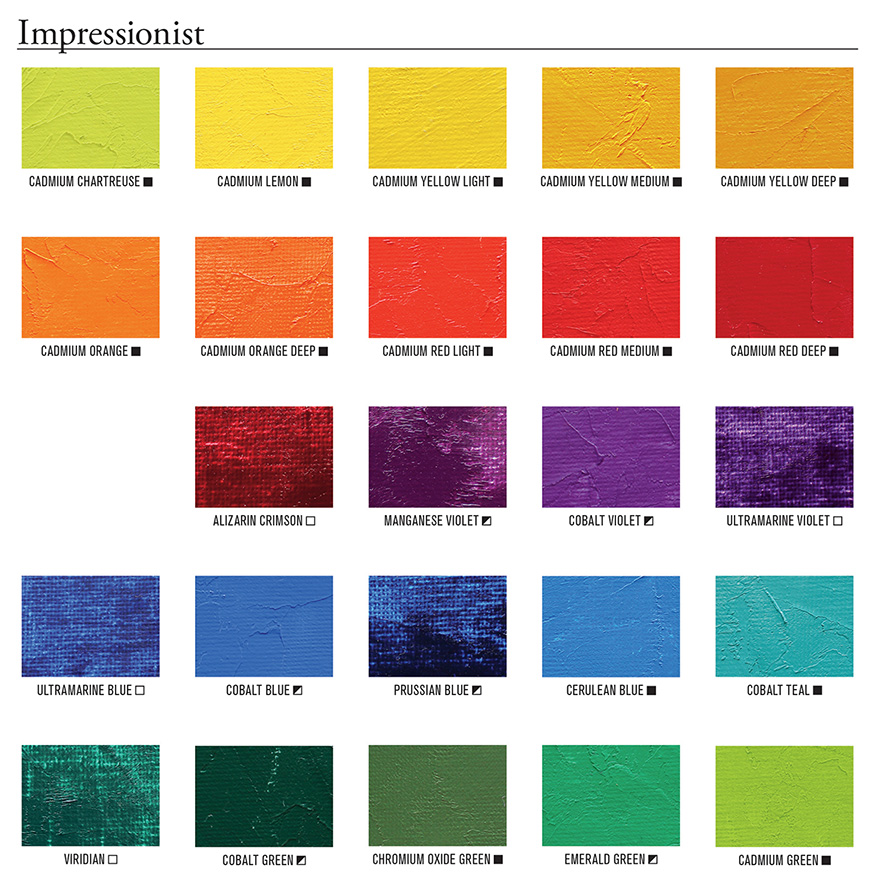
For the first time in history, painters of this flow had the pigments available to capture all of the colors of the natural world, expressed in the Impressionists' involvement in pure colour. The denser, tubed oil colors fabricated from brighter and opaque pigments lent themselves to the direct painting techniques so characteristic of the Impressionists.
Impressionist Palette in Color Space:
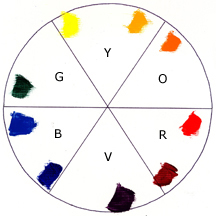
Impressionist Palette Colors
- Yellow Light
- Cadmium Yellowish Deep
- Cadmium Orangish
- Cadmium Cerise Light
- Alizarin Crimson
- Cobalt Violet
- Ultramarine Blue
- Cerulean Bluish
- Viridian
The Modernistic Palette: Another Color Revolution
The end of the nineteenth century gave nascency to the field of organic chemistry with applications in the pharmaceutical, dye, and printing industries. Mod organic pigments are made in high-tech laboratories from materials which have cardinal atoms of carbon. These colors are characterized past their greater transparency and their chapters to produce intense tints and mixtures. Colour makers not but matched nature'southward abundance of colour merely likewise improved upon information technology.
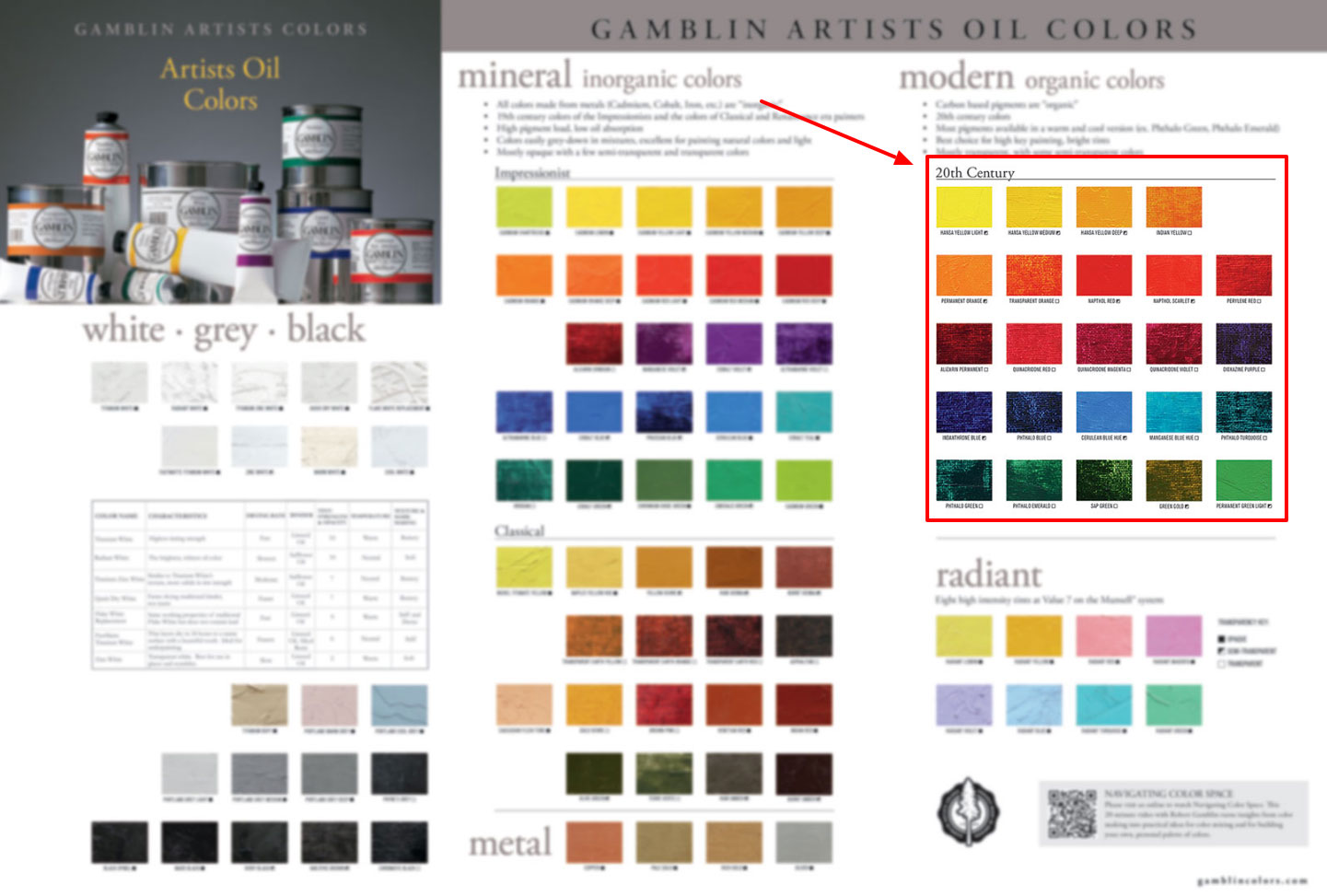
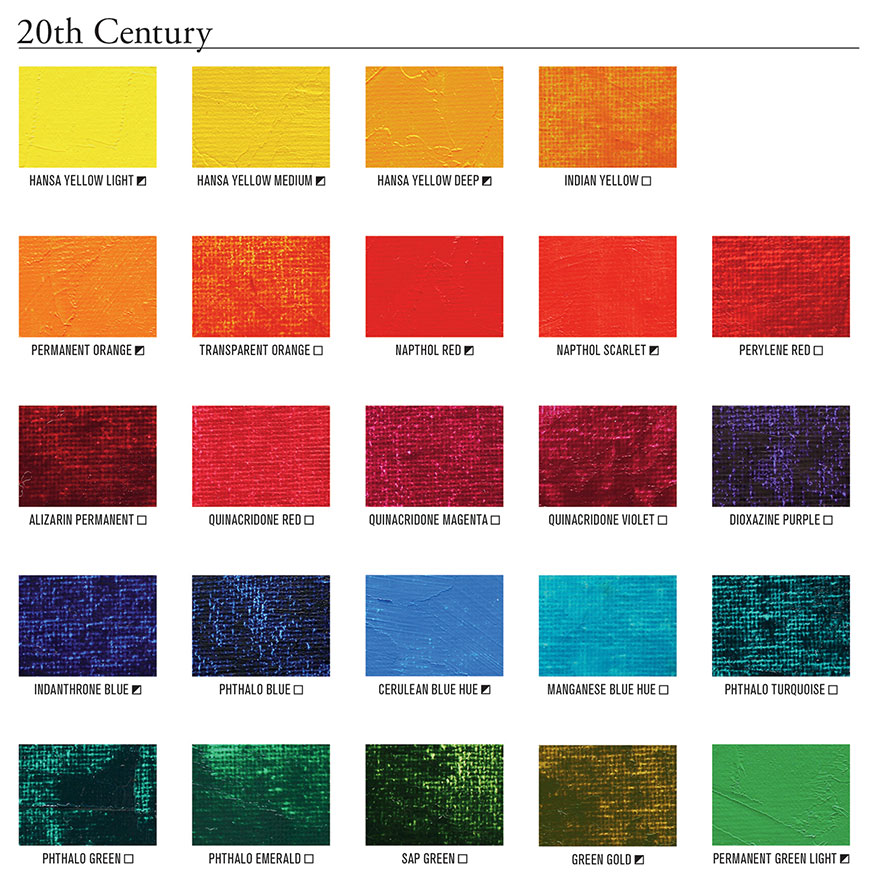
Once again, developments in pigment technology widened painters' access to color and expanded creative possibilities. Unlike paint families on the mineral side of the colour nautical chart, which shift in value from low-cal to dark (i.e. Cadmium Lemon to Cadmium Yellowish Deep), modernistic organic colors shift in temperature from cool to warm, such as Phthalo Green (cool) to Phthalo Emerald (warm). This temperature bias of modern colors is conducive to creating a Spectral Palette, which incorporates a warm and cool for each of the six hue families. Thus, the colors included in the Spectral Palette occupy the most space effectually the perimeter of the colors wheel, giving painters the greatest color mixing potential within Colour Infinite.
Mod Palette in Color Infinite:
Modern Palette Colors:
- Hansa Yellow Light
- Hansa Yellow Medium
- Hansa Yellow Deep
- Permanent Orange
- Napthol Scarlet
- Quinacridone Ruby
- Quinacridone Violet
- Dioxazine Purple
- Phthalo Blue
- Manganese Blueish Hue
- Phthalo Green
- Phthalo Emerald
The Difference Between Mineral and Modern Colors
The biggest difference in the characteristics between mineral and modern colors–and arguably of most interest to painters–is how these two groups of pigments carry differently in color mixing. Below are two unlike reds, the mineral Cadmium Red Medium and modern Napthol Red, each mixed with Titanium Zinc White.

As shown in a higher place, the mineral Cadmium Ruby-red Medium "greys down" and loses its intensity equally it is mixed with white, compared to the modern Napthol Red, which retains its intensity in its tint. This difference will hold up for any mineral vs. any modern colour. Mineral colors, in tints, shift in VALUE and Blush. Modern colors shift but in VALUE and retain their loftier CHROMA. This divergence will likewise hold up during colour-to-color mixing:

Mineral colors are suitable for painters that are interested in capturing the colors of the natural world and the effects of natural light. Mod organic colors are appropriate for painters who want to make loftier key colour mixtures. Modernistic colors are also more transparent, giving painters loftier key colors in all hue families for glazing or indirect painting techniques.
As nosotros have a look at these iii colour palettes representative of the three main eras of paint history, we can easily see how advancements in paint technology take widened painters' access to color.


Painters today enjoy history's greatest access to stable, lightfast pigments. At that place is no reason for you as a painter to settle for a palette that doesn't run across your creative intentions. If you would similar to receive our color chart or have any questions nigh choosing a palette of colors that meets your own creative intentions, delight feel free to contact usa.
Source: https://gamblincolors.com/mineral-modern-colors/
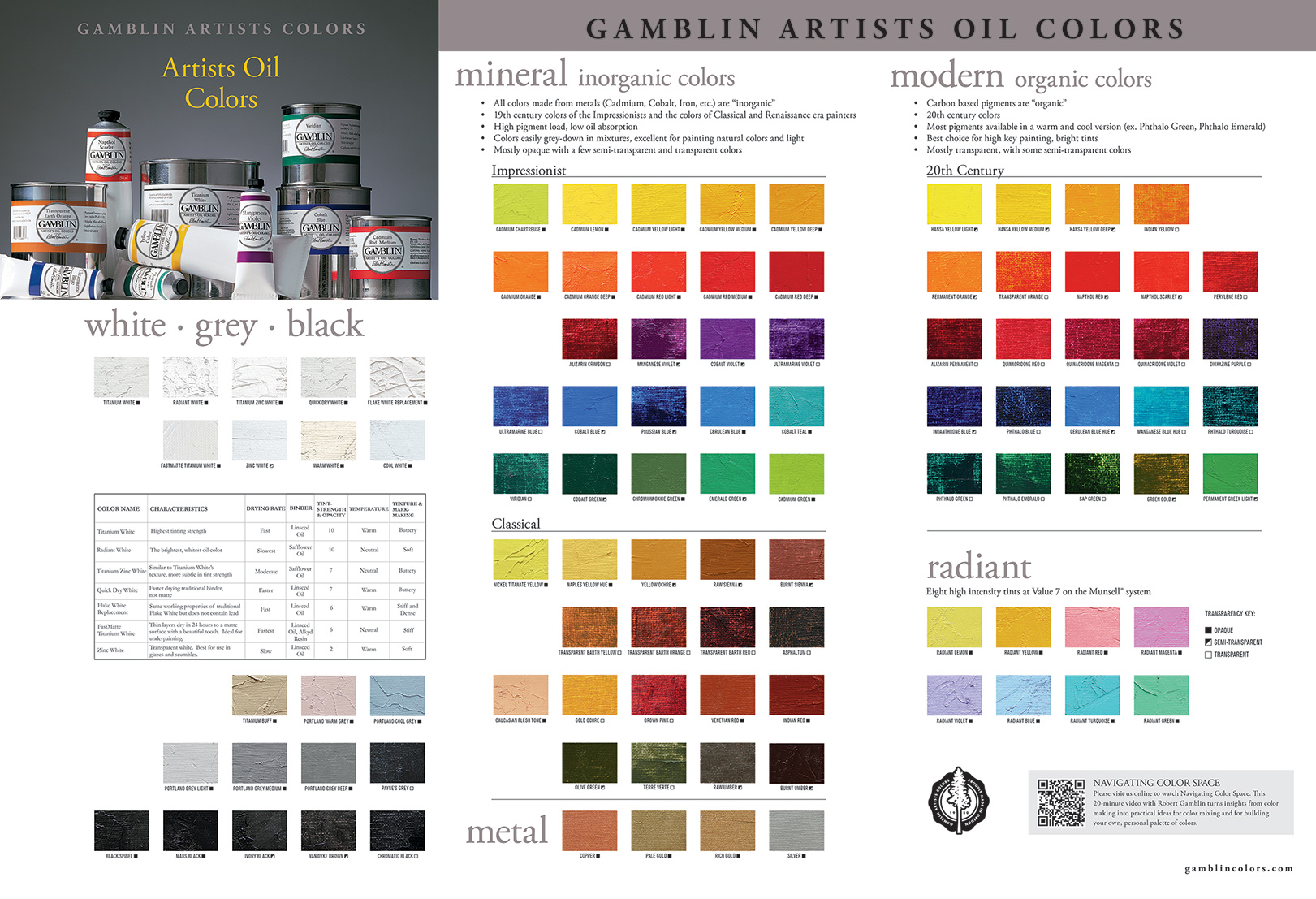

0 Response to "The Effect of New Pigments in the Industrial Revolution for the Modern Art Movement"
Post a Comment